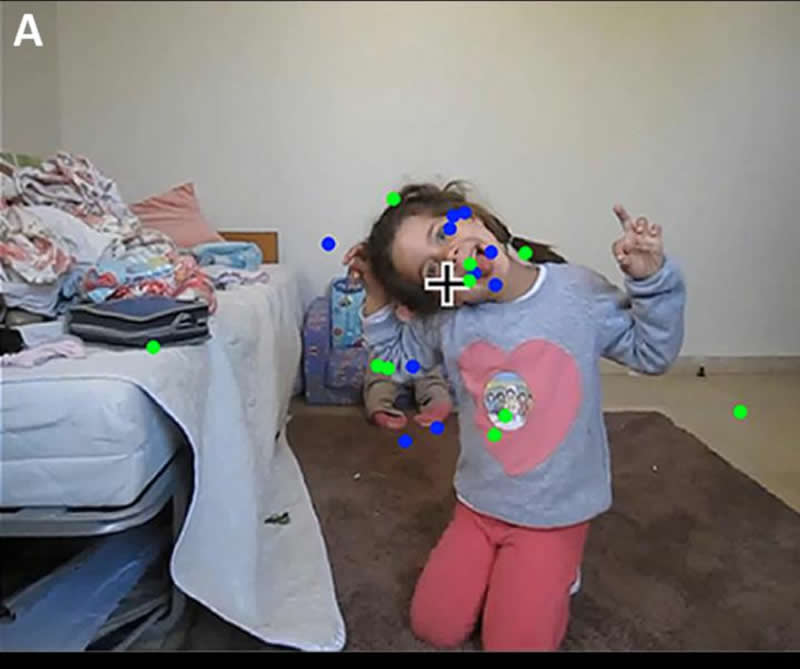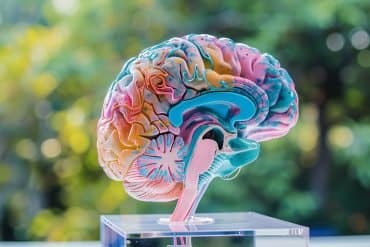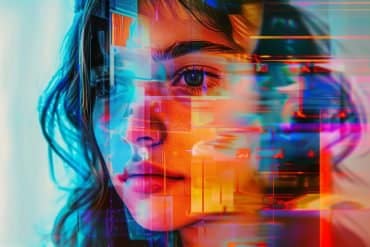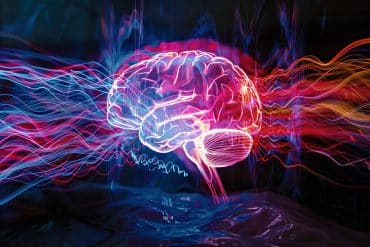Summary: Tracking gaze patterns in children as they watch videos of social interactions is an accurate way to detect almost 50% of autism cases, a new study reports.
Source: American Associates Ben-Gurion University of the Negev
Measuring children’s gaze patterns as they watch movies of social interactions is a reliable way to accurately identify nearly half of autism spectrum disorder (ASD) cases, according to a new study just published in Autism Research by Ben-Gurion University of the Negev (BGU) researchers.
“Eye tracking is likely to be one of the first technologies that will be incorporated into clinical use for assessment of ASD symptoms, but it needs to be optimized to identify and quantify specific ASD symptoms,” explains Prof. Ilan Dinstein, of BGU’s Departments of Psychology and Cognitive and Brain Sciences and director of Israel’s National Autism Research Center. “This new study takes a first important step in this direction using eye tracking technology to compare different movies and measures within the same group of children.”
The research was presented at the Breaking the Barriers of Brain Science symposium sponsored by American Associates, Ben-Gurion University of the Negev (AABGU) on Sunday, October 27 at the InterContinental New York Times Square.
According to the United States Center for Disease Control (CDC), one in 59 children in the U.S. has ASD. Generally, when typically developing children watch movies of social interactions, they do so in a reliable and predictable manner, observing faces, gestures, body movements, and objects that are relevant to the social interaction and its narrative. In the new study, the researchers demonstrate that children with ASD watch such movies with significantly more variable and idiosyncratic gaze patterns.
Previous eye tracking studies have reported that children with ASD fixate less on faces in comparison to control groups. However, children must also gaze at actions, gestures, body movements, contextual details, and objects that are part of the social narrative, thereby creating complex gaze patterns to properly understand social interactions.
In the current study, the researchers presented ASD and control children with three short movies, each shown twice. Two of the movies were animated and one was a realistic home video; all contained social interactions between at least two individuals. This experimental design allowed comparisons across movies, presentations and different eye tracking measures to identify what is the best technique for identifying ASD children based on differences in gaze behavior.
Since children watch movies in a predictable manner, the gaze pattern of individual children is remarkably similar to the mean gaze pattern of their group. In other words, typically developing children agree on where and when to look at specific locations in the frame.
In contrast, children with ASD exhibited significantly more variable/idiosyncratic gaze patterns that differed from the mean gaze pattern of the typically developing children. Moreover, their gaze patterns were remarkably inconsistent not only between individuals, but also across movie presentations. Hence, when children with ASD watch the same movie repeatedly, they have more variable and inconsistent gaze patterns.

“Quantifying this gaze idiosyncrasy in individual children enabled separation of ASD and control children with higher sensitivity and specificity than traditional measures such as time gazing at faces,” Dinstein says. “It was also strongly correlated with their social symptom’s severity.”
The largest differences across ASD and control groups were apparent when using a realistic video containing a social interaction between two sisters (two and five years-old) in a messy room with everyday objects. This suggests that abnormal, idiosyncratic gaze patterns were most pronounced when ASD children observed real-life unedited interactions of other children. This makes the findings particularly relevant to real-life social situations.
“Taken together, these results demonstrate that ASD children with more severe symptoms exhibit larger gaze idiosyncrasy,” Dinstein says. “This can aid not only in early detection of autism, but also in assessing changes in ASD severity over time and in response to treatments. Such measures, which objectively measure symptoms directly from the child, are critically lacking in today’s clinical trials of autism treatments.”
Source:
American Associates Ben-Gurion University of the Negev
Media Contacts:
Andrew Lavin – American Associates Ben-Gurion University of the Negev
Image Source:
The image is credited to BEN-GURION U.
Original Research: Closed access
“Children with autism observe social interactions in an idiosyncratic manner”. Ilan Dinstein et al.
Autism Research doi:10.1002/aur.2234.
Abstract
Children with autism observe social interactions in an idiosyncratic manner
Previous eye‐tracking studies have reported that children with autism spectrum disorders (ASD) fixate less on faces in comparison to controls. To properly understand social interactions, however, children must gaze not only at faces but also at actions, gestures, body movements, contextual details, and objects, thereby creating specific gaze patterns when observing specific social interactions. We presented three different movies with social interactions to 111 children (71 with ASD) who watched each of the movies twice. Typically developing children viewed the movies in a remarkably predictable and reproducible manner, exhibiting gaze patterns that were similar to the mean gaze pattern of other controls, with strong correlations across individuals (intersubject correlations) and across movie presentations (intra‐subject correlations). In contrast, children with ASD exhibited significantly more variable/idiosyncratic gaze patterns that differed from the mean gaze pattern of controls and were weakly correlated across individuals and presentations. Most importantly, quantification of gaze idiosyncrasy in individual children enabled separation of ASD and control children with higher sensitivity and specificity than traditional measures such as time gazing at faces. Individual magnitudes of gaze idiosyncrasy were also significantly correlated with ASD severity and cognitive scores and were significantly correlated across movies and movie presentations, demonstrating clinical sensitivity and reliability. These results suggest that gaze idiosyncrasy is a potent behavioral abnormality that characterizes a considerable number of children with ASD and may contribute to their impaired development. Quantification of gaze idiosyncrasy in individual children may aid in assessing symptom severity and their change in response to treatments.
Lay Summary
Typically, developing children watch movies of social interactions in a reliable and predictable manner, attending faces, gestures, actions, body movements, and objects that are relevant to the social interaction and its narrative. Here, we demonstrate that children with ASD watch such movies with significantly more variable/idiosyncratic gaze patterns that differ across individuals and across movie presentations. We demonstrate that quantifying this gaze variability may aid in identifying children with ASD and in determining the severity of their symptoms.






